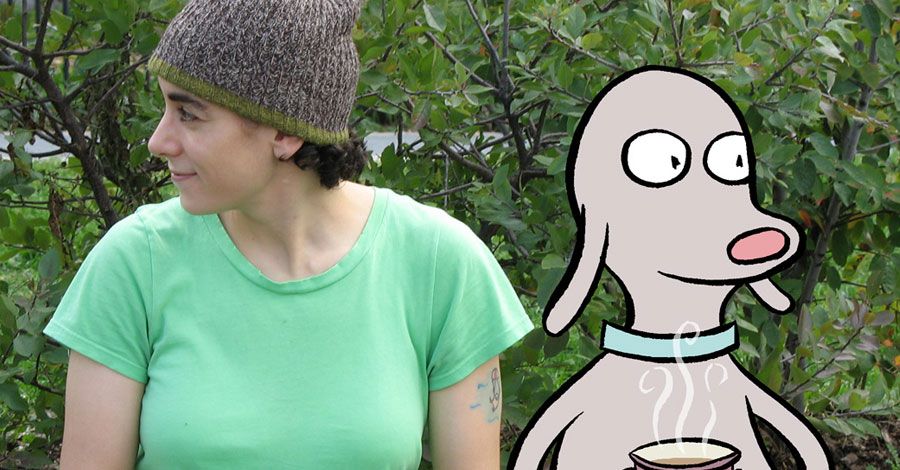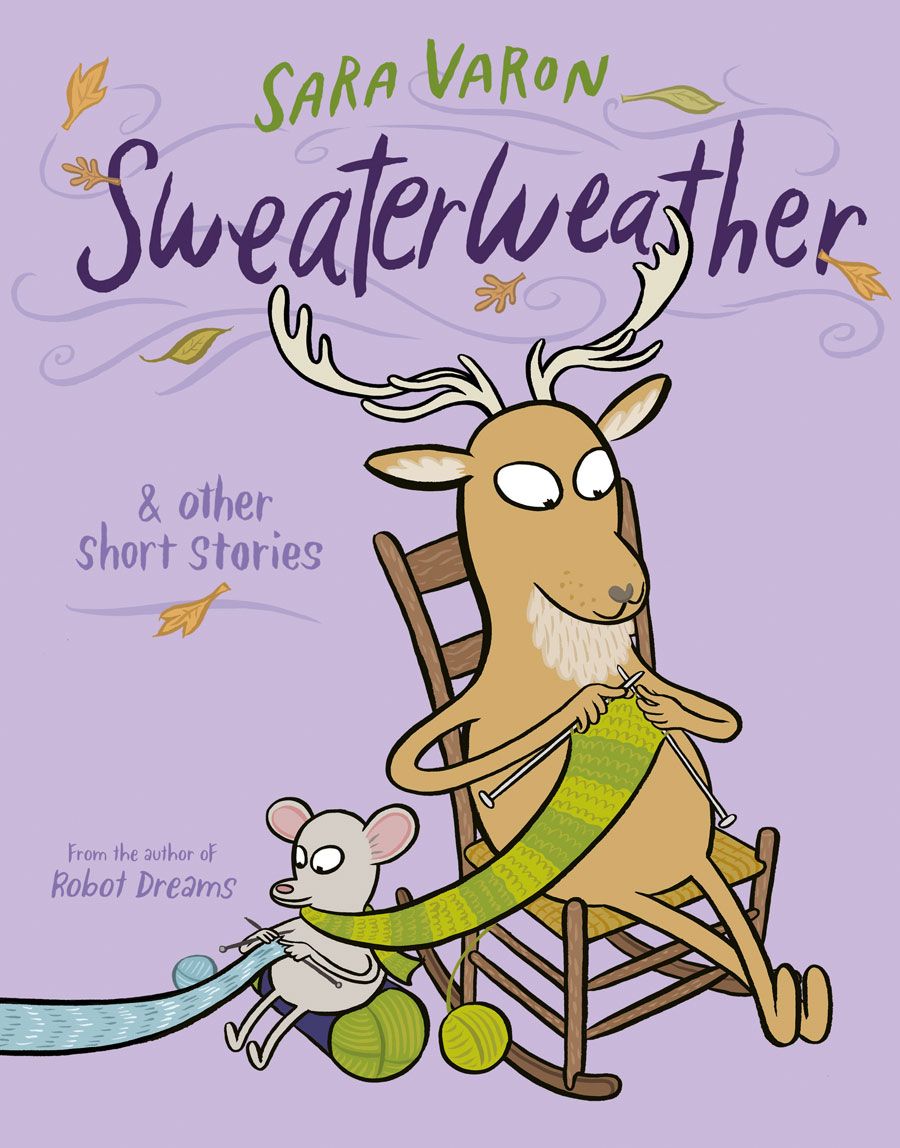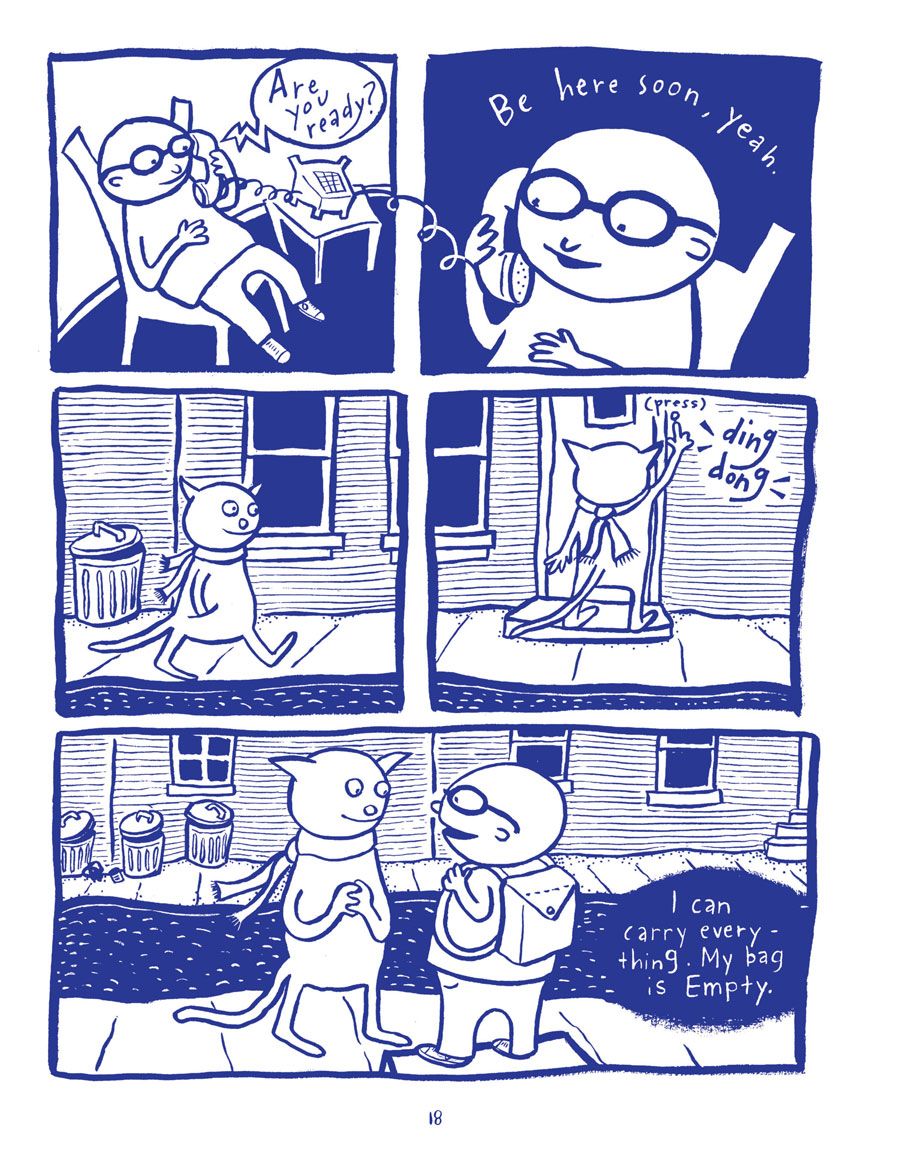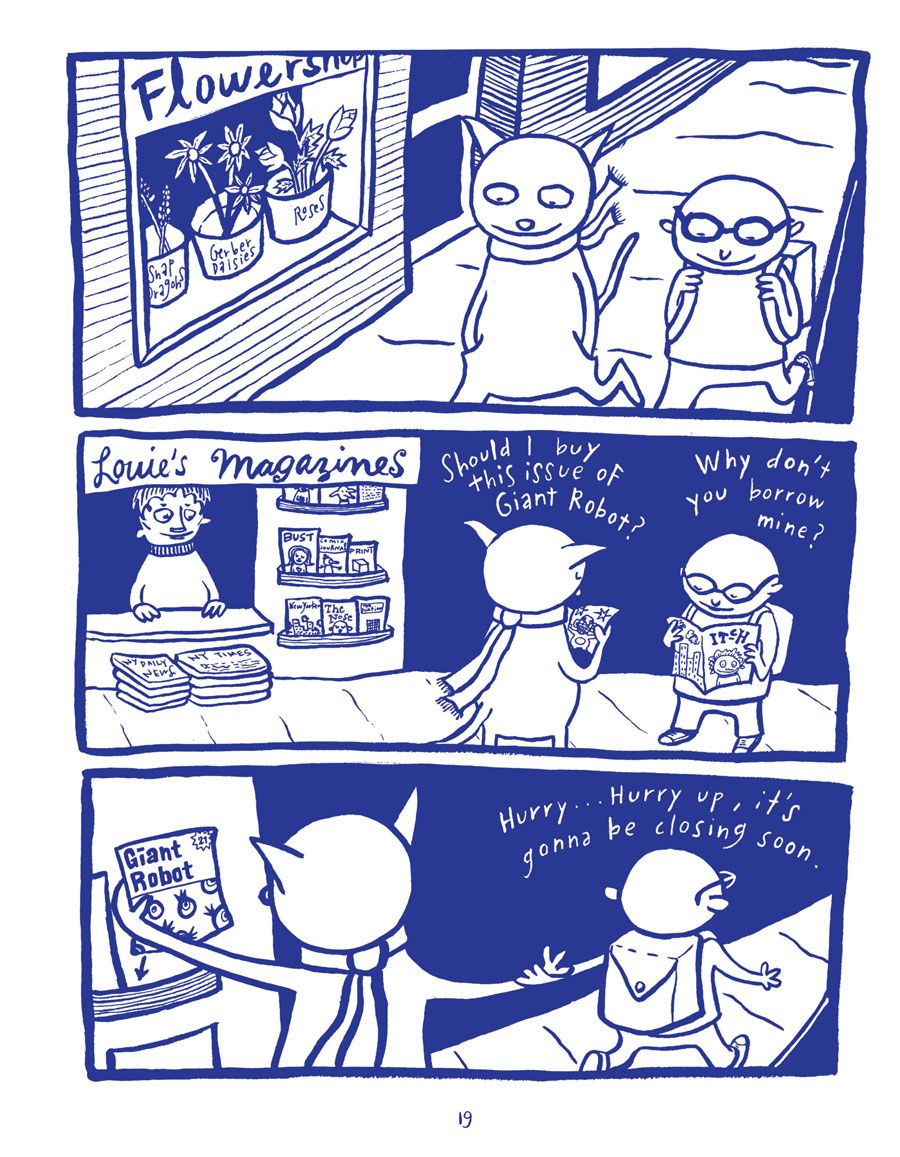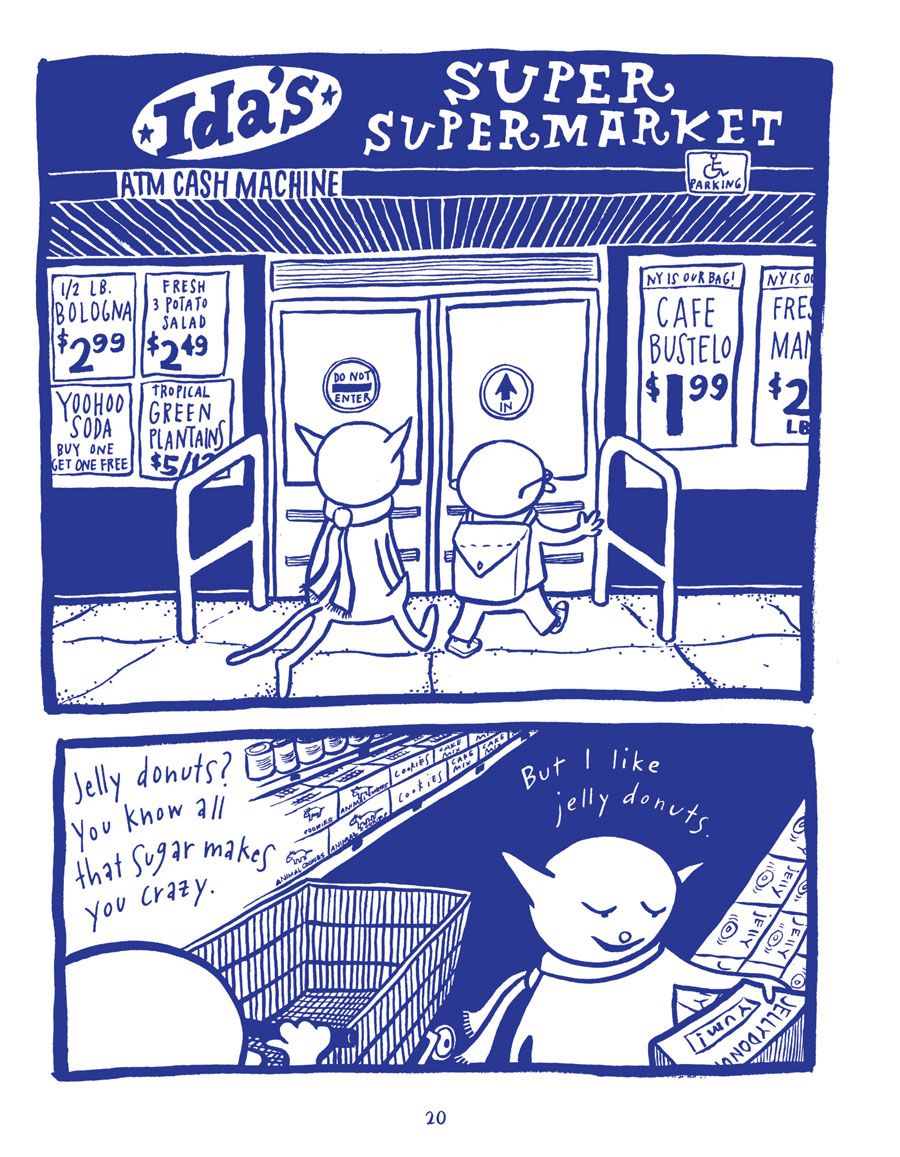With the release of "Sweaterweather" in 2003, cartoonist Sara Varon began a career that has led her to multiple awards, and projects in both the comics realm as well as picture books.
"It was a collection of short comics with some paper products bound into the book," Varon recalls of "Sweaterweather's" original release."Postcards, paper dolls, fake postage stamps. I thought of it as a window into a specific place, and all the characters in the stories made up the community."
Now, First Second Books is re-releasing Varon's initial comics work, along with two new stories, in a hardcover edition, featuring notes and commentary. CBR News spoke with Varon about revisiting her first professional work, what she's learned since in the 13 years since its initial release and where she believes the future will take her.
CBR News: Take us back to when the first edition of this book came out in 2003. At that point, you were not the beloved, award-winning cartoonist of "Robot Dreams," "Bake Sale," "Chicken and Cat" and other books. Where were you, and what were you trying to do?
Sara Varon: Well, I'd just graduated from art school and, like many recent grads, I was terribly broke. Making the book was my entertainment for about a year. I had hooked up with this amazing publisher, Jeff Mason of Alternative Comics, who said, "Make whatever you want to make." What an opportunity!
Before coming to NYC to get my MFA in Illustration, I'd been both an off-set printer and had done digital pre-press, so it was an opportunity for me to put the book of my dreams together!I prepared the files and dealt directly with the printer.At the time, I was very interested in printing with spot colors, so I got to pick 2 Pantones for the inside, and then for the front cover I got to use 3 Pantone colors (the colors overlap to create an interesting color palette) and I got to put a spot varnish on it. I got to tip in a tiny page, which was a small flyer that went with one of the stories.I also got to tip in a page of card stock that had postcards you could cut out.And there was a page of stamps that were dry-gummed on the back and perforated, so you could tear them out and put them on your postcards -- or wherever.All of that was super-exciting to me -- that was my first and last opportunity to do those things because publishers almost never want to pay for that stuff.
What do you think of the book looking back on it? I mean, this is some of your earliest work. I'm sure some artwork makes you cringe -- as everyone cringes when looking at their earliest work -- but does it feel like your voice?
Ugh, it totally makes me cringe to look back on some of those awful drawings!But I think, as a whole, it shows how artists improve over time. In that way, it's important to show my ugly old drawings.Personally, I'm not very reflective, so it was nice for me to look back and see where I've come from and to remember what I was doing and thinking back then.
Along those lines, one aspect of your work which is clearly there from the beginning is your trust in wordless comics, and not leaning on dialogue to define the characters and stories. That seems to have been an interest from the beginning of your career.
Wordless comics are a natural fit for me. I'm not graceful or creative with language.
When you make short comics, is your process different from when you make a book length story?
Yes. You don't have to think about story arc in the same way. Or even at all.
One thing I kept thinking of when reading the book, and I suppose this is in part a response to the short comic that became "Robot Dreams," is how most of your short stories have happy endings, but your books are much more emotionally complex. Is that a question of length? Is it about becoming a better storyteller?
Hmm, I don't have a good answer for that.I guess -- maybe you can fit more into a long story? My first priority is to make people laugh or smile.If I only have enough space for one thing, my goal would be that. But it's nice when it's not too sugary, because I like them to reflect life in some way, and life is often a mixed bag.
How did you decide what material to include in the new edition, and to add notes and commentary?
It was a challenge. I didn't get enough of an advance to create too much new material, so I collected all my short comics from 2002-2014.(I did make 2 new ones, though.)The collection was no longer cohesive -- the subject matter and drawing style of the comics was all over the place. Mark Siegel's idea was to weave it together with diary entries about my life and work process, and this would be the glue that held everything together.
The new version includes the original 8 short stories plus 9 more recent ones in a totally redesigned package.These are woven together with the diary-like entries about where the ideas came from and what I was doing in my life when I made them, so it's more like a document of my evolution as an artist over a 10-year period, and also shows a little bit about where an artist's inspiration comes from.
Initially, I thought this sounded like kind of a chore, but it ended up being extremely fun.I love having pieces of things and figuring out how to put them all together.Something that is really important to me about making books is that the page turn is so important.If you have a joke or something suspenseful, you put it on the right hand page so that you don't see the punchline.Then, there is a moment of suspense when you turn the page and you see the punchline on the next left-hand page.I decided to put the stories in chronological order, but in order to keep all the jokes on the right hand side, I ended up with a few places where I had an extra blank page.Filling these blank page was really fun.I inserted photos and drew on top of them, which I absolutely love to do.For one page, I had a funny photo of some hairless dogs in Mexico that fit with the previous story, so I drew in another dog.And on another page, at the end of the original eight "Sweaterweather" stories, I took a photo of the original cover and drew in some characters as though they were reading it.
You clearly love design work, so what was your thinking behind the wraparound cover and the end pages?
I have to give credit for the cover to Danielle Ceccolini, a new-ish designer at First Second, who was a pleasure to work with.I always love a wraparound cover, but the idea of someone knitting a really long scarf that stretches across the back is Danielle's idea.I chose a reindeer, because at the time, I was going to Helsinki for their annual comics festival, so I was thinking a lot about reindeer -- and Moomins.
As for the end papers, they are always one of the best parts of making a book.The original version also had a map with all the characters simultaneously going about their business, so I just updated it with the new characters from this version of the book.
After being so involved with the design of the first edition, how involved were you in putting together this new edition?
I was pretty involved, although I got some important feedback from Mark and Danielle. In terms of artwork, I had a ton of freedom.They let me do whatever I wanted for the endpapers, title page, contents page and empty pages/filler. Also, they generously agreed to let me make a different picture for the book case.The standard (I think) is to have the paper jacket and the book case have the same image, so if you remove the paper jacket, you will find a snowman underneath.The backstory on the snowman is this:there was a comic in the original "Sweaterweather" about a smoking snowman, but smoking was banned from the new edition. I put the snowman -- sans cigarette -- on the book case so he wouldn't feel left out.
I know that you're in the midst of a new graphic novel. Do you want to say anything about it?
It's about a donkey named Francis who lives in a tropical village.I'm pretty excited about it -- I hope to be done by the end of the year, so maybe it will be out in late 2017?My husband is from Guyana, so it's inspired by our trips there. There are all kinds of strange and cool fruits, animals and plants there, so the book is a vehicle for me to draw those things. It's about 200 pages (mostly full page illustrations, so it's taking forever to draw) and the story follows the main character, Francis, as he leaves the comfort of his village and journeys into the jungle to find his missing friend, a squirrel monkey.
I have to ask, what's favorite animal to draw?
Well, I have a few stand-by characters -- dog, rabbit, bird, bear, monkey.Animals, rather than people or things, are my go-to subject matter.Once I draw an animal, it's also fun to think about who that animal would be friends with.

